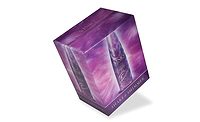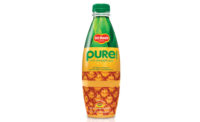In the consumer packaged goods space, brand owners are tasked not only with creating a product that resonates with consumers, but a package that conveys its purpose and message to them. Although a lot of thought goes into the initial packaging design, brand owners know the importance of listening to their consumers, and potential consumers, as their business grows in order to reach a broader audience.
The story: In 2008, Steve Demos and Todd Beckman, founders of organic food company NextFoods Inc., Boulder, Colo., believed that healthy food makes great medicine and, as such, created the GoodBelly brand, which brought non-GMO, dairy- and soy-free, vegan and kosher probiotic drinks to the marketplace.
With its sleek black carton and emphasis on unique probiotics features, GoodBelly quickly distinguished itself from other fruit juices in the natural channel.
The challenge: Because of the brand’s success in the natural channel, GoodBelly’s marketing team had a gut feeling it was ready for wider distribution that went beyond specialty food stores. In order to communicate to this broader audience, the company hired health-marketing specialist Denver-based LRXD to design new cartons for its quart- and single-shot-sized juice products to appeal to new consumers.
Shoppers who perused natural-foods stores always had responded positively to GoodBelly’s packaging, which conveyed it as a functional product that aids the digestive tract. However, company research found a hitch just as it was about to pitch the product to the masses: Because probiotics were the packaging’s priority, most consumers didn’t identify GoodBelly as a juice despite complementary images of produce and a glass of the colorful drink. It needed to boost its flavor appeal.
The solution: The brand decided to play down its biology lesson and focus more on taste to achieve the perfect balance of form and function. From focus group to grocery store shelf, the carefully planned rollout took more than a year.
But the preparation was worth it. GoodBelly swears by consumer research and data-driven analysis, so it conducted focus groups to craft art and copy to ensure new consumers could instantly understand the carton’s content and how the product could positively impact their everyday health.
With those findings, LRXD designed the visuals to give the proper weight to each of the product’s benefits: its probiotic function, great taste and dairy-free benefits. One finding that affected this balance: the fact that 60 percent of customers eat yogurt regularly. This meant the non-dairy message did not need to be emphasized as much as previously thought.
Also, different sizes of GoodBelly can be found in different store sections — quarts generally sell in dairy next to yogurt and other dairy-based probiotics, while shots are available in the supplements section. Therefore, the packaging for the various products needed to be consistent in appearance.
LRXD maintained the package’s eye-catching black background, and chose to replace small, static pictures of produce and juice glasses with cornucopias of fruits and vegetables that appear to burst off the boxes. With the redesign, LRXD simplified the message and made it consistent across all SKUs. A new tagline runs in small type above the Helvetica-type GoodBelly label now: “Drink daily for healthy digestion.”
Kelly Reedy, LRXD’s chief executive officer and chief creative officer, says the updated look conveys the idea that wellness begins with a healthy belly. Although GoodBelly cartons still inform shoppers that its drink has probiotic benefits, the functional message is de-emphasized with smaller, less-prominent text in color-coded boxes to let the flavor appeal shine through.
This article originally appeared in the March 2015 issue of BRANDPackaging, a sister publication of Beverage Industry magazine. For more information, visit brandpackaging.com.





